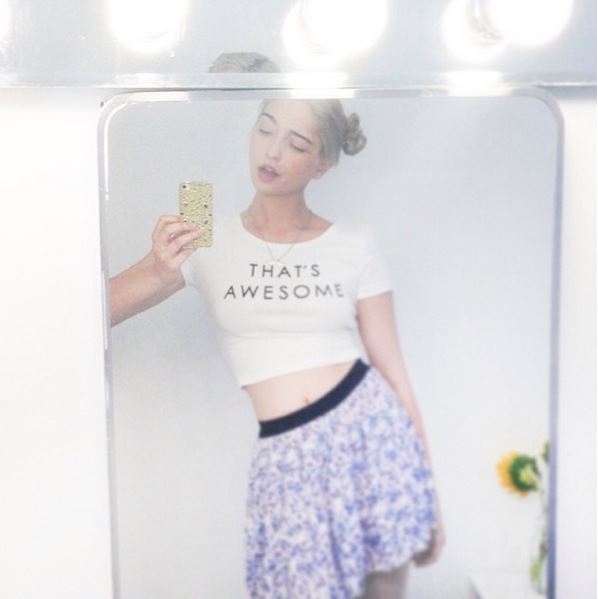
Photo: via Instagram/@amaliaulman,
It’s hard to keep young up-and-coming artists happy, especially if they come with the nickname “generation me.” Whether it’s due to restlessness or a better opportunity, gallery representation can resemble a game of musical chairs. Remember when Julian Schnabel left Mary Boone, who gave him his first show in 1979, for Pace in the 1980s?
In another boom market, there are a number of reasons why an artist decides to leave a gallery. But before your coveted millennial artist jumps ship, artnet News decided to share our insights about how to keep the ones worth keeping on your gallery roster.
1. Pay your artists on time.
It’s not the most unreasonable task, but it nonetheless happens more often than not. Dealers take months to invoice, collectors take months—or years—to pay up, and in turn artists don’t get paid fast enough, or at all. And sometimes the outcome is a lawsuit. Take painter Dean Levin, for instance. He sued Upper East Side dealer Robert Blumenthal for nearly $200,000, claiming non-payment after a sold-out show last May. And a cursory glance at the no-longer operational blog How’s My Dealing shows several anonymous users commenting on one gallery’s allegedly bad track record for paying artists.
2. Don’t call artists “crazy” or “unreasonable.”
Artists can be unstable (most of the better ones are, let’s be honest) so if they have an unusual request or want to make something out of the most difficult materials to find, don’t complain. Just get it done.
3. Don’t ignore their phone calls or emails.
No one likes to feel needy. Following on the tip above, artists appreciate it when you answer their phone calls and emails promptly.
Carlos/Ishikawa, G26, with works by Oscar Murillo, Ed Fornieles, and Korakrit Arunanondchai.
Photo: Linda Nylind, courtesy of Linda Nylind/Frieze.
3. Go to art fairs, and bring your artists.
Fairs are a place to get more exposure, so it’s likely that if you never bring an artist to one, they will think you are playing favorites—and he or she is not one of them.
4. Sell their art to the right collectors.
Artists are responsible for their market as much as galleries are, but some don’t know it. Artworks are not disposable commodities, so it’s an instance when supply should not meet the demand. Artists do not want to see their recent work hit the auction block. Make sure you are picking the right collectors to sell an artist’s work to and keep your distance from too many art flippers. As art dealer (and artnet News contributor) Kenny Schachter told the New York Times, “Artists in their 20s just shouldn’t be selling for almost $400,000.”
5. Have relationships with museums or influential board members.
Although not a necessity, it’s always good to have an in with a curator at the Guggenheim or MoMA. If your young artist is in a group show at the Whitney, it’ll bring attention to the artist as well as your gallery—a win-win. If you can’t go directly to the source, then try to develop relationships with collectors who sit on their boards.
Performance at MoMA PS1 VW Dome with Korakrit Arunanondchai and Boychild, March 23, 2014.
Photo by Charles Roussel. Courtesy of the artist, MoMA PS1.
6. Be their advisor as well as their dealer.
Just selling their art won’t inspire loyalty in the toughest times; a personal connection with the artist is also key.
7. Get them things they can’t (or don’t want to) get themselves.
Whether it’s a visa or a place to crash in whatever city they’re currently visiting, it’s always beneficial to help your artists out in the needs department. After all, you are essentially their manager and they are your talent. Why else does UTA want to represent fine artists? Because, though some of them can be divas, dealing with artists is probably nothing compared to dealing with Hollywood stars.
8. Get decent wine (or beer) for the opening.
Gone are the days of fancy appetizers and cheese straws. These days, a large trash can filled with cans of PBR would make any millennial artist happy. (Some gallerists even brew their own beer.) If you want to make them feel extra special, stash away a few wine bottles and maybe some mezcal for shots with staff and friends after the opening. Remember: artists party hard.
Kemang Wa Lehulere, When I can’t laugh I can’t write (2015).
Photo via evenmagazine.com. Courtesy Stevenson Gallery, Cape Town.
Related stories:
10 Exceptional Millennial Artists to Watch
Meet the New Generation of London Art Dealers